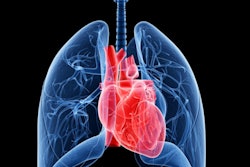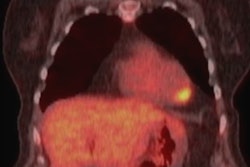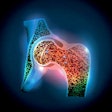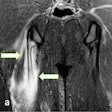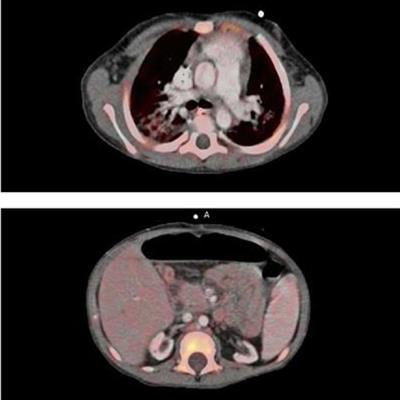
With high sensitivity and negative predictive value, FDG-PET/CT is very accurate in diagnosing suspected malignancies or infection in patients after a solid-organ transplant, according to a study in the March issue of the European Journal of Nuclear Medicine and Molecular Imaging
The researchers from Denmark also reported that FDG-PET/CT "safely and accurately" ruled out disease among these patients, who experienced unexplained symptoms that suggested malignant or infectious disease after their transplants.
"To our knowledge, this is the first study to describe the diagnostic role of FDG-PET/CT in nonselected diagnostic unresolved solid-organ transplant recipients," wrote lead author Dr. Neval Wareham and colleagues from Rigshospitalet in Copenhagen (EJNMMI, March 2017, Vol. 44:3, pp. 421-430). "We have demonstrated that the use of FDG-PET/CT in the follow-up of solid-organ transplant recipients with nonspecific and unexplained symptoms at our hospital has high diagnostic values and can reliably detect or exclude malignancies or infections."
Transplant consequences
After undergoing a transplant of a solid organ, such as a heart, liver, or kidney, patients often are prone to an increased risk of complications related to the procedure for much of their lives. The adverse results can include a weakened immune system, higher rates of comorbidities, and a greater risk of developing cancers compared with the general population, according to the authors.
For its part, FDG-PET/CT has long been efficient in detecting malignant and inflammatory cells and also helping to manage the treatment of oncology patients. In addition, the modality is quite proficient at evaluating inflammation and infection.
"FDG-PET/CT may thus be a helpful tool in the management of solid-organ transplant recipients," the authors wrote. "Conversely, the available literature of the role of FDG-PET/CT in transplant recipients is limited and based on few cases or specific clinical issues."
The researchers retrospectively and consecutively looked at both children and adults who received a transplanted heart, lung, liver, or kidney at Rigshospitalet between January 2004 and May 2015. All patients underwent a whole-body FDG-PET/CT scan (Biograph TruePoint or Biograph 64 mCT, Siemens Healthineers; Discovery LS, GE Healthcare) from the skull base to the proximal thigh.
Patients were excluded if they had undergone FDG-PET/CT imaging as a follow-up to an already diagnosed disease or if they underwent FDG-PET/CT scans for staging and follow-up of known infectious or malignant disease. The exclusions left 122 transplant recipients in the final cohort who received a total of 133 FDG-PET/CT scans to diagnose their unresolved issues.
Initial FDG-PET/CT scans were performed for suspected malignancies in 80 cases (65%) and infection for 42 patients (35%). There were 11 patients who underwent second scans, with cases of suspected malignancy and three cases of suspected infection.
The median time from transplantation to the first FDG-PET/CT scan was 19 months (range of 4-49 months), with 11 subjects undergoing a second FDG-PET/CT scan a median of 11 months (range of 5-44 months) later.
Diagnostic value
Among the 133 FDG-PET/CT scans, the hybrid modality suggested a malignancy in 32 cases (24%) and an infection among 32 patients (24%). Other specific findings of potential clinical relevance, such as rejection of the liver or lung graft or unspecific inflammation of a lymph node, were found in 18 patients (14%).
Conversely, FDG-PET/CT ruled out any suspicion of infection or malignancy in 59 (44%) cases. In addition, eight patients (6%) remained undiagnosed, and two patients were lost to follow-up (2%).
| FDG-PET scan results | |
| Result | No. of cases |
| True positive | 66 cases (54%) |
| True negative | 46 cases (37%) |
| False positive | 10 cases (8%) |
| False negative | 1 case (1%) |
Among the 66 true-positive scans (54%), the diagnostic workup resulted in a cancer diagnosis for 19 patients (29%), an infection in 28 cases (42%), post-transplant lymphoproliferative disorders in 12 individuals (18%), and other specific findings in seven (11%) cases.
Eight of 10 false-positive scans suggested malignancy, but histology disproved the results, and no malignancy was diagnosed during the follow-up period.
 Above: An FDG-PET/CT scan of a 3-year-old kidney and liver recipient with fever shows increased FDG uptake in enlarged and normal-sized lymph nodes above and below diaphragm, including the extremities. Below: The patient was in complete remission after three weeks of treatment. The area with increased FDG retention in the right fossa corresponds to urine excretion in the well-functioning graft. Images courtesy of EJNMMI.
Above: An FDG-PET/CT scan of a 3-year-old kidney and liver recipient with fever shows increased FDG uptake in enlarged and normal-sized lymph nodes above and below diaphragm, including the extremities. Below: The patient was in complete remission after three weeks of treatment. The area with increased FDG retention in the right fossa corresponds to urine excretion in the well-functioning graft. Images courtesy of EJNMMI.FDG-PET/CT achieved sensitivity of 97%, specificity of 84%, positive predictive value of 87%, and negative predictive value of 96%.
"Our results thus indicate that FDG-PET/CT can safely and accurately exclude focal disease in solid-organ transplant recipients experiencing unexplained symptoms pointing towards malignant or infectious disease," the authors concluded.
The authors cited several study limitations, including its retrospective approach and the lack of a control group.



